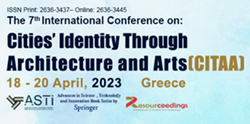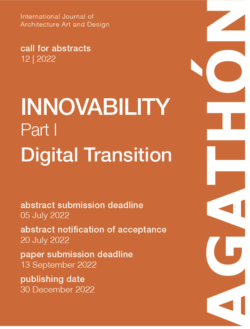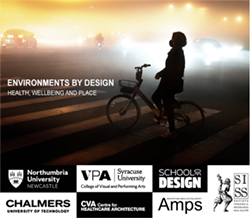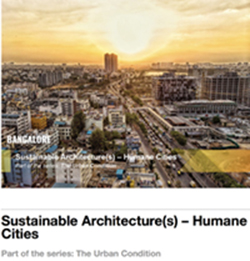ISSN (online): 2071-1050
Call of the Journal:
- Agricultural Innovation and Sustainable Development
- Applications of Artificial Intelligence in New Energy Technology Systems
- Approaches to the Non-conflictual Use of Resources
- Artificial Intelligence (AI) and Sustainable Development Goals (SDGs) | Exploring the Impact of AI on Politics and Society
- Autonomous Vehicles | Future of Transportation Sustainability
- Belt & Road Initiative in Times of ‘Synchronized Downturn’ | Issues, Challenges, Opportunities
- BIM-Based Life Cycle Sustainability Assessment for Buildings
- Biochar and Greenhouse Gas Emissions during Livestock Bio-Waste Composting
- Bringing Governance Back Home | Lessons for Local Government regarding Rapid Climate Action
- Carbon Neutrality and Sustainability
- Challenges and Opportunities for a Sustainable Tourism Sector
- Circular Economy | A Move towards Economical Viable Sustainability
- Circular Economy Evaluation | Towards a Transparent and Traceable Approach under a Life Cycle Perspective
- Climate Adaptation and Mitigation through Sustainable Energy Solutions
- Considering Irreversibility in Transport Infrastructure Planning
- Construction 4.0 | The Next Revolution in the Construction Industry
- Corporate Sustainability and Sustainable Management in Changing Environments
- Covid-19 and Urban Inequalities | Spatial and Digital Dimensions
- Designing and Implementing Innovative Business Models and Supply Chains | The Digitalization and Sustainability Imperative
- Digital Economy, E-commerce, and Sustainability
- Eco-Didactic Art, Design, and Architecture in the Public Realm
- Economy and Sustainability of Natural Resources
- Educational Spaces and Sustainability
- Effects of Climate Change on Sustainable Agriculture
- Efficient and Non-polluting Biomass and Wastes Thermal Gasification
- Emerging Research on Socio-Technological Sustainability Transitions
- Energy System Sustainability
- Environmental Impacts under Sustainable Conservation Management
- Environmental Management Approaches and Tools to Boost Circular Economy
- Environmental Migration and Displacement-Migration Aspirations in Response to Environmental Changes
- Exploring and Analyzing Links between the Covid-19 Pandemic and Globalization | Levers for Sustainability Transitions?
- Farming System Design and Assessment for Sustainable Agroecological Transition
- Geological Heritage and Biodiversity in Natural and Cultural Landscapes
- Governance of Technology in Smart Cities
- Green Building Technologies II
- High Precision Positioning for Intelligent Transportation System
- Household Food Waste | From an International Perspective
- Hydrological Responses by Climate Change and Human Activities
- IEIE Buildings (Integration of Energy and Indoor Envirornent)
- Influence of Hydrometeorological Hazards on Regional Sustainable Development in Vulnerable Mountain Areas
- Infotainment Systems and Intelligent Vehicles
- Innovations towards Greener and Smarter Mobility for Sustainable Development
- Innovative and Sustainable Technology in Carbon Emission Reduction
- Innovative Food Science and Sustainable Process Management
- Integration of BIM and ICT for Sustainable Building Projects
- Karst and Environmental Sustainability
- Low CO2 Concrete
- Machine Learning for Sustainable Energy
- Maladaptation to Climate Change
- Management and Innovation for Environmental Sustainability
- Management Approaches to Improve Sustainability in Urban Systems
- Mediatization of Social Sustainability | Paradigm of Explicitation and Understanding of the Environment, Society and the Economy
- Modelling and Mapping of Soil
- Natural and Technological Hazards in Urban Areas | Assessment, Planning and Solutions
- Nature-Based Tourism, Protected Areas, and Sustainability
- New Environmental, Economic and Social Challenges for Raw Materials Supply | Sustainable Mining and Extractive Waste Exploitation
- New Evidences of Indoor Thermal Comfort in Residential and Tertiary Buildings | Design and Evaluation Methods
- Organic and Perovskite Photovoltaics | New Materials, New Processes and Stability
- Planning and Design Interventions for Improving the Well-Being of Vulnerable Groups
- Port Governance
- Public Health Related to Climate Change
- Public Transport Accessibility and Sustainability
- Recycling and Sustainability of Plastics
- Regenerative Buildings and Beyond | Scale Jumping Sustainable and Net-Zero Designs to Regenerative Neighbourhoods, Districts, Communities, and Cities
- Renewable Energies for Sustainable Development
- Rural Development | Challenges for Managers and Policy Makers
- Scientific Theory and Methodologies toward a Sustainable Future under Post-Covid-19 Transition Movement
- Sheltering and Housing Displaced Populations
- Smart City Innovation and Resilience in the Era of Artificial Intelligence
- Soil Stabilization in Sustainability
- Sustainability and Agricultural Economics
- Sustainability at the Nexus between Climate Change and Land Use Change
- Sustainability in Water and Wastewater Treatment Technologies
- Sustainable and Safe Two-Wheel Mobility
- Sustainable Building and Sustainable Indoor Environment
- Sustainable Cities | Challenges and Potential Solutions
- Sustainable Construction Engineering and Management
- Sustainable Cropping Practices to Counteract Environmental Stresses
- Sustainable Development and Practices | Production, Consumption and Prosumption
- Sustainable Development of Energy, Water and Environment Systems (SDEWES)
- Sustainable Enterprise Excellence and Innovation
- Sustainable Entrepreneurship, Firm Performance and Innovation
- Sustainable Geotechnics | Theory, Practice, and Applications
- Sustainable Innovation Trends and Global Value Chains in Emerging Markets
- Sustainable Intelligent Manufacturing and Logistics Systems
- Sustainable Railway Systems | Innovation and Optimization
- Sustainable Transportation Management, Governance and Public Policy
- Sustainable Transportation Planning and Policy
- Sustainable Zero Energy Buildings
- Systems Engineering for Sustainable Development Goals
- The Human Side of Sustainable Innovations
- The Value Generation of Social Farming
- Towards a Sustainable Urban Planning for the Green Deal Era
- Urban Microclimate and Air Quality as Drivers of Urban Design
- Urban Renewal, Governance and Sustainable Development | More of the Same or New Paths?
- Urban Sprawl and Sustainability II
- Urban Sustainability | Community-Scale Climate Adaptation
- Urban Sustainability | Re-envisioning Cities to Lead the Way toward to Circular Economy
- Urbanization and Road Safety Management
- Water-Food-Energy Nexus for Sustainable Development
- World Cities in the Era of Globalization
Jan
2021
Apr
2021
During the last few years, we have witnessed advances in the implementation of new technologies in the automotive industry, for example, in the design and development of user interfaces for driver and passenger communication and entertainment, known in the automotive industry as “infotainment systems”. These new interfaces have increasing capabilities for processing, storage, communication, and interaction. As a result, a wide variety of technologies have been developed in the past decades. These technological changes have created a new communication environment between the driver, passengers, and car, allowing the development of applications with a wide range of interaction possibilities, which leads to new challenges regarding design, quality, utility, usability, and accessibility. On the other hand, more and more people, drive as a major part of their lives. At the same time, universal access to information and entertainment has become widespread with the rise of mobile computing. The “infotainment system” is related to the fact that both work and play reside in the same devices. Through “infotainment systems” it is possible to view relevant information on the operation of the vehicle or provide entertainment capabilities through its applications. Infotainment inherently demands a user’s attention; what good is information or entertainment if the user is not aware of it? Some types of infotainment applications require more attention than others. Driving also demands the user’s attention, with very serious consequences possible if that attention lapses. Because of this, there has been some concern about the design, development, and use of infotainment devices in cars. Researchers, for example, have tested different user interface designs to find one that demands the least cognitive load while still allowing the user to perform the desired task efficiently. Driving is a major part of many people’s lives. Most people who own a car use it on a daily basis to work, visit friends and family, and many other tasks. Mobility is a desirable luxury, and so it is understandable that many people invest in automobiles. Driving is referred to as the primary task, while interacting with the infotainment system is referred to as the secondary task. This Special Issue will deal with some of the most important aspects related to the design of interfaces for infotainment systems in cars and the development of technology for intelligent vehicles.
Keywords: infotainment systems; human-computer interaction; automobile; intelligent vehicles.
Infotainment Systems and Intelligent Vehicles
During the last few years, we have witnessed advances in the implementation of new technologies in the automotive industry, for example, in the design and development of user interfaces for driver and passenger communication and entertainment, known in the automotive industry as “infotainment systems”. These new interfaces have increasing capabilities for processing, storage, communication, and interaction. As a result, a wide variety of technologies have been developed in the past decades. These technological changes have created a new communication environment between the driver, passengers, and car, allowing the development of applications with a wide range of interaction possibilities, which leads to new challenges regarding design, quality, utility, usability, and accessibility. On the other hand, more and more people, drive as a major part of their lives. At the same time, universal access to information and entertainment has become widespread with the rise of mobile computing. The “infotainment system” is related to the fact that both work and play reside in the same devices. Through “infotainment systems” it is possible to view relevant information on the operation of the vehicle or provide entertainment capabilities through its applications. Infotainment inherently demands a user’s attention; what good is information or entertainment if the user is not aware of it? Some types of infotainment applications require more attention than others. Driving also demands the user’s attention, with very serious consequences possible if that attention lapses. Because of this, there has been some concern about the design, development, and use of infotainment devices in cars. Researchers, for example, have tested different user interface designs to find one that demands the least cognitive load while still allowing the user to perform the desired task efficiently. Driving is a major part of many people’s lives. Most people who own a car use it on a daily basis to work, visit friends and family, and many other tasks. Mobility is a desirable luxury, and so it is understandable that many people invest in automobiles. Driving is referred to as the primary task, while interacting with the infotainment system is referred to as the secondary task. This Special Issue will deal with some of the most important aspects related to the design of interfaces for infotainment systems in cars and the development of technology for intelligent vehicles.
Keywords: infotainment systems; human-computer interaction; automobile; intelligent vehicles.
AGORA (FAO), AGRIS-Agricultural Sciences and Technology (FAO), Animal Science Datbase (CABI), CAB Abstracts (CABI), Chemical Abstracts (ACS), Current Contents Sciences (Clarivate Analytics), DOAJ, EconPapers (RePEc), FSTA-Food Science and Technology Abstracts (FIS), Genamics Journal Seek, GeoBase (Elsevier), Global Health (CABI), HINARI (WHO), IDEAS (RePEc), Inspec (IET), Journal Citation Reports/Science Edition (Clarivate Analytics), Journal Citation Reports/Social Science Edition (Clarivate Analytics), Norwegian Register for Scientific Journals, Series and Publishers (NSD), RePEC, Review of Agricultural Entomology (CABI), Science Citation Index Expanded-Web of Science (Clarivate Analytics), Scopus (Elsevier), Social Science Citation Index-Web of Science (Clarivate Analytics), Web of Science (Clarivate Analytics), CLOCKSS (Digital Archive), e-Helvetica (Swiss National Library Digital Archive), Academic OneFile (Gale/Cengage Learning), EBSCOhost (EBSCO Publishing), Google Scholar, J-Gate (Informatics India), ProQuest Central (ProQuest), Science in ContexT (Gale/Cengage Learning), WorldCat (OCLC).
Info at: www.mdpi.com/journal/sustainability/apc
Guest Editors
Prof. César A. Collazos
Prof. Huizilopoztli Luna García
Prof. Wilson Sarmiento










